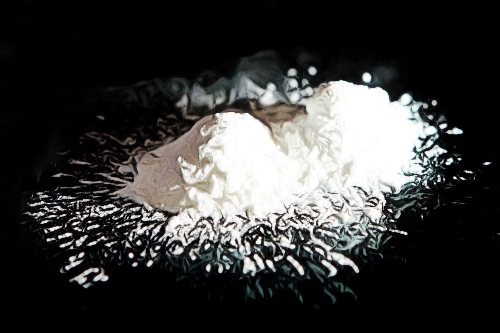Ketamine hydrochloride is a drug that comes with many names, including “Kit Kat,” “Special K,” “Dorothy,” “Cat Valium,” or simply “K.” It was first discovered in the late 1950s and has been in prescription in the US since the 1970s for medicinal and veterinary purposes.
Nowadays, the use of ketamine is largely prohibited due to its moderate potential for abuse and addiction. It is a particularly prevalent problem in the club or party scene. With its mysterious and highly regulated nature, many people are left in the dark about its uses, mechanisms, and risks.
Ketamine Addiction
With long-term and frequent use, individuals can develop ketamine addiction. This condition makes quitting challenging because their bodies often become accustomed to and dependent on the drug. It can affect many aspects of their life, such as work, school, finances, and relationships. Moreover, it puts them at a higher risk for overdose.
What Is Ketamine?
Ketamine is a drug that belongs to a family of medications known as dissociative anesthetics, which can give a person a feeling of having an out-of-body experience. Other members of this classification of substances include dextromethorphan (DXM), phencyclidine (PCP), and nitrous oxide (laughing gas).
As a dissociative anesthetic, special K produces strong sedative effects that act on some chemicals in the brain, which can distort a person’s perception of visual and auditory sensations as well as their sense of reality. Its hallucinogenic properties are similar to those of PCP, but it is lower in severity and typically only lasts around one to two hours.
What Are the Uses of Ketamine?
Ketamine has various medical and veterinary uses. It is often used as a sedative for animals and humans who undergo radiation or burn therapy. Moreover, it can also be used if patients do not take well to other types of anesthetics. The substance may be sold under the brand names Ketanest, Ketaset, and Ketalar.
Physiologically, this substance stimulates the individual’s heart rate, opens up the airways, and suppresses breathing to a lesser extent compared to other anesthetics. For this reason, it is a safe option for children and patients susceptible to low blood pressure, such as those in need of emergency surgeries in war zones.
Ketamine can also be used to treat acute pain, typically as a supplement or substitute for morphine. It effectively reduces the need for morphine and the side effects of opioids after surgery, such as nausea, vomiting, and pain.
Recent research has also suggested the implications of the drug for mental illnesses, such as depressive disorders. It acts as a rapid-acting antidepressant whose effects are transient but effective nonetheless. The substance even works well against treatment-resistant depression.
Special K falls under the category of schedule III controlled substances, which have low to moderate potential for dependence and abuse. These types of medications have accepted medical uses but are generally illegal to use without the supervision of a licensed doctor.
What Is a Ketamine High or K-Hole?
When used recreationally, low doses of ketamine make people feel floaty and light. Users may also experience feelings of euphoria. However, in higher doses, the substance can produce hallucinogenic and dissociative effects, often referred to by users as “falling into a k-hole.”
Many users describe a k-hole as an out-of-body experience, with a feeling so intense that it temporarily impairs a person’s ability to interact with the outside world. Individuals who use the substance sometimes feel as if they are floating or rising above their body, while others say the sensation is akin to melting into their environment.
These are some of the most common psychological effects of the substance for users:
- Confusion
- Disorientation
- Paranoia
- Detachment or dissociation
- Numbness
- Hallucinations
- Warped perceptions
- Dizziness
- Nausea
- Inability to speak or move
Some users regard the k-hole as a state of consciousness between intoxication and comatose, with most of the perceptions being hallucinations and illusions rather than grounded on reality. Some describe it as going through a near-death experience. Psychotic and dissociative effects may sometimes become ongoing symptoms.
Most recreational ketamine users do not voluntarily use high doses of the substance. Often, the k-hole is a terrifying experience because individuals tend to detach from themselves and their environment, feeling powerless due to their inability to speak or move around. However, some find the sensation pleasurable.
To other people, individuals experiencing a k-hole may appear intoxicated and non-moving, although the eyes tend to bolt around erratically—this condition is referred to as nystagmus.

What Attracts People to Take Ketamine?
Although k-holes can often be terrifying because of the lack of power and control that comes with them, ketamine addiction is still a growing problem nowadays. A significant amount of people still take the substance for recreational purposes. It is a popular party drug that can induce feelings of euphoria, relaxation, and other pleasurable experiences.
Many individuals use special K because of peer pressure. They may have friends, family members, or co-workers that use the substance for recreational purposes, and the users may coerce or entice the non-users into taking the drug. This situation is often the case for younger people.
Many users also enjoy the dissociation and depersonalization that comes with using the substance. These feelings may provide them with a way to escape the stressors of everyday life, especially if they are dealing with distressing or traumatic past experiences. It is a way to cope with extremely negative emotions and underlying mental health conditions, such as anxiety, post-traumatic stress disorder, and depression.
How Do People Use Ketamine?
Ketamine is typically injected into veins when used in medical settings, as this provides quicker and more potent effects than other methods of use. Some people who use the substance also inject it either in their veins or muscles.
Special K can also come in many forms, such as pills, white or off-white powders, or colorless liquids. The majority of users take the substance by snorting it in its powder form. Some take it as tablets or swallow the powder. It has also been dissolved in liquids and put into drinks as a date rape drug.
What Are the Risks of Ketamine Use?
There are many risks of using ketamine, as it has a range of psychological and physiological effects. Some short-term side effects of falling into a k-hole include an increased heart rate, elevated blood pressure, loss of coordination, short-term memory loss, and impaired awareness of the individual’s surroundings.
Some users also feel the effects of a k-hole even after the drug has supposedly worn off. They may still feel detached and disconnected from their environments, and they can also experience ongoing symptoms of psychosis or warped perceptions of reality.
Taking the drug frequently and in high doses can also produce many adverse consequences in the long term. These effects include cardiac issues, seizures, bladder problems, and cognitive impairments. The substance also has a moderate potential for abuse, leading many to the dangerous path of addiction.
Conclusion
Ketamine is a drug that has some medical uses, but it also carries many risks when used recreationally. Using it without the supervision of doctors can have terrifying short-term and long-term consequences, and its moderate potential for abuse makes it a slippery slope to addiction.
Sources:
https://www.dea.gov/factsheets/ketamine
















